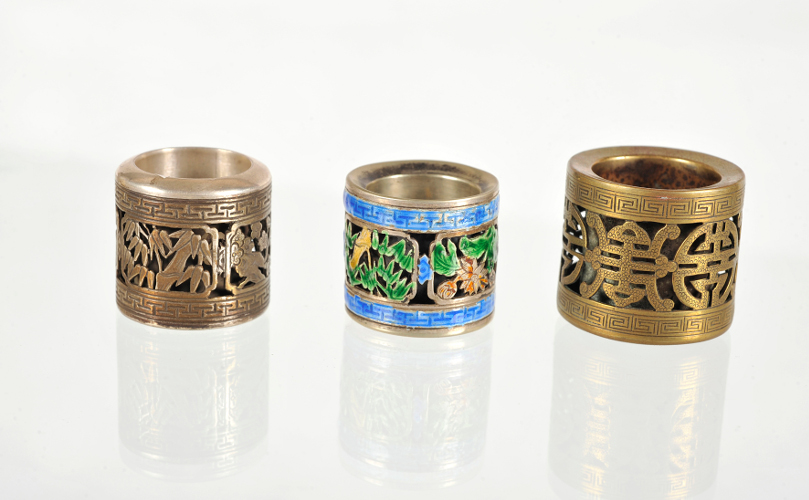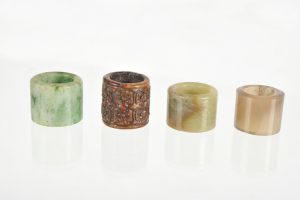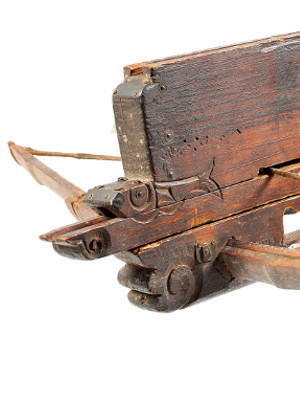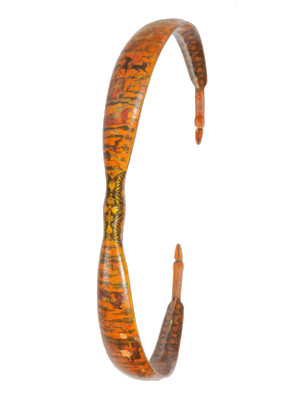Chinese thumb rings
Anonymous
China
17th-19th century,
Metal, stone
Gift of Museum’s Friends Association, 2001
Inv. 2002.22.05, 2005.6.1, 2001.01.06, 2001.01.060, 2002.22.06, 2001.01.061-062
______________
Used in the Orient throughout the ages, these rings had various shapes. Simple cylinders in China and Mongolia, these adorned rings could have a protrusion covering the fingertip. They protected the archer’s thumb from the rubbing of the bowstring.
In Europe, historically, the archers used the Mediterranean draw, which means that they grabbed the bowstring with their index and middle finger; whereas Oriental archers, equipped with composite shorter and more powerful bows, used the Mongolian draw technique, using all the strength of their thumb to grab the bowstring. Drawing was done only with the folded thumb locked in by the middle finger. This archery technique – unlike the Mediterranean draw – requires a bow without an arrow rest. It calls for a long training to be mastered but is considered superior to the Mediterranean release.
In order to be functional, thumb rings needed to be crafted in resistant materials such as bone, bronze or copper. The most precious models, in jade or silver, often decorated with motifs, were, contrary to the others, processional objects. When a dignitary carried such a ring, it traced him back to a prestigious lineage of warriors.
The thumb ring is not the only accessory designed to protect the archer’s fingers. In Japan, Kyudo archers use a three or four finger leather glove, named kake, whereas Occidental archers use finger tabs, gauntlets or releases.
















